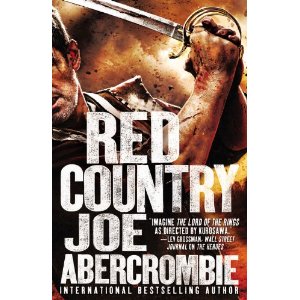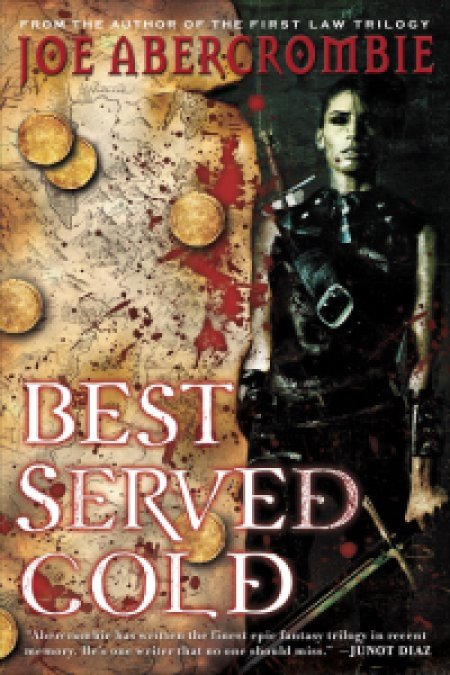
I picked up Gardens of the Moon by Steven Erickson pretty much on a whim, not really knowing what I was in for. I’d seen it near the top of some random best fantasy series list, so I thought I’d try it.
Gardens of the Moon is the first book in the Malazan Book of the Fallen series. It focuses on the multi-continental empire of the Malazan, specifically on their campaign on the continent of Genabackis. Here we meet the Bridgeburners, an elite company of Malazan soldiers, as well as the people of Darujhistan, last Free City standing in the way of Malazan control over Genabackis.
In a word, it’s sprawling. Erickson rivals Tolkien in his world-building. Not since The Lord of the Rings have I read a fantasy novel with such a massive scope, and that includes A Song of Ice and Fire. (That’s not a knock on GRRM as much as it is a pat on the back for Erikson). It’s a lavish world, packed near to bursting with characters and races and plots and subplots. There is so much going on and so many different forces at work that it’s almost unbelievable that only two guys made all of it up (Erickson created the world of the Malazan with fellow author Ian Estermont, originally conceiving of it as an environment for Dungeons and Dragons). It’s truly an incredible feat of world-building.
But the scope of Gardens of the Moon is a detriment as well as a strength. There is so much content that I spent the last third of the book being thoroughly confused. Maybe it’s because I listened to most of it on audiobook, but it seemed very difficult to follow. It was hard to remember who was working for who or who had done what, especially because the narrative focuses on one character and then doesn’t return to that character for many more chapters. This is one of the few problems I have with A Song of Ice and Fire as well, and here it’s only magnified. More characters and more things going on make it invariably more confusing.
I think another area where Gardens falls short is on characterization. Some of the characters come so close to being compelling, but few ever achieve that status. I wanted to like Whiskeyjack, I wanted to like Captain Paran, and I wanted to know more about Anomander Rake––but there just wasn’t much there. To be fair, there are still nine books left in this series, and I’m sure Erickson builds on his characters further. But still, a little more attention to them in this volume would’ve been nice to see.
One last thing: I really admired Erickson’s intentionally anti-Tolkien take on fantasy. Much like Martin’s work, there isn’t any central quest, nor are there any heroic figures. Rather, it’s a bleak, violent world consumed by war. It doesn’t look like there’s any light at the end of the tunnel, either. I always appreciate a fantasy series that isn’t a Tolkien retread, and thankfully, the Malazan Book of the Fallen series is anything but.
…
Gardens of the Moon is an astounding feat of creative imagination, if a little confusing at times. The characters seem somewhat flat too, especially when compared with those from A Song of Ice and Fire. However, the world by itself is enough of a reason to recommend it.
Rating: 8/10

 A fantasy-western hybrid. Sounds fun, right? That’s what Joe Abercrombie’s Red Country. Set in the disputed, gold-ridled landscape of the Far Country, Red Country tells the story of Shy South and her step-father Lamb. When their farm is burned down and Shy’s brother and sister are taken, the unlikely pair go on a quest to get them back. But Lamb isn’t who he seems, and the quest becomes more than they bargained for.
A fantasy-western hybrid. Sounds fun, right? That’s what Joe Abercrombie’s Red Country. Set in the disputed, gold-ridled landscape of the Far Country, Red Country tells the story of Shy South and her step-father Lamb. When their farm is burned down and Shy’s brother and sister are taken, the unlikely pair go on a quest to get them back. But Lamb isn’t who he seems, and the quest becomes more than they bargained for. If you haven’t noticed from my book choices, I’m a big fan of fantasy literature. Ever since reading The Hobbit, I’ve been hooked. So after browsing the fantasy/sci-fi section of the bookstore the other day, I decided on David Eddings’ Pawn of Prophecy. I’d heard good things about it before, so my expectations were pretty high.
If you haven’t noticed from my book choices, I’m a big fan of fantasy literature. Ever since reading The Hobbit, I’ve been hooked. So after browsing the fantasy/sci-fi section of the bookstore the other day, I decided on David Eddings’ Pawn of Prophecy. I’d heard good things about it before, so my expectations were pretty high. Cynical characters, fast pacing, and a hell of a lot of blood. I think that sums up Joe Abercrombie’s fantasy novel The Heroes pretty well.
Cynical characters, fast pacing, and a hell of a lot of blood. I think that sums up Joe Abercrombie’s fantasy novel The Heroes pretty well. ‘Why so soon?’ you may be asking. I might ask myself the same question. Truth is, I’ve been reading my brains out because my summer job hasn’t started yet, and I haven’t had much else to do besides read and write this dandy blog here. Oh well…you can never read too many books!
‘Why so soon?’ you may be asking. I might ask myself the same question. Truth is, I’ve been reading my brains out because my summer job hasn’t started yet, and I haven’t had much else to do besides read and write this dandy blog here. Oh well…you can never read too many books! Just finished Joe Abercrombie’s Best Served Cold, and it’s easily my favorite entry from an excellent fantasy writer.
Just finished Joe Abercrombie’s Best Served Cold, and it’s easily my favorite entry from an excellent fantasy writer.